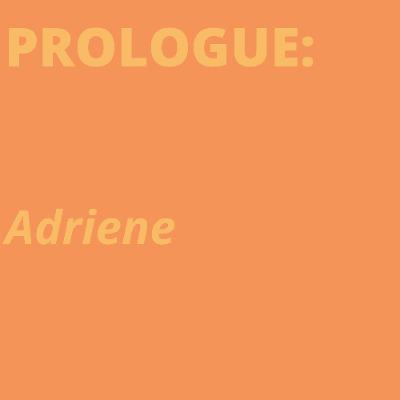Discover Here There Be Dragons
Here There Be Dragons

44 Episodes
Reverse
Although much of the conflict of urban life is focused on public space there’s a lot to be said for the negotiations we all maintain indoors. Through the restaurant kitchen downstairs or the noisy neighbor next door the city tends to extend inside. This episode is sort of an audio gatecrashing, I’m inviting myself into a few Odes[s]an interiors, and you listeners are welcome to join me.
Every so often we’re going to bring you something we’ve been calling off-cuts and footnotes. These are extended scenes and deep dives that didn’t make the final cut of the main episodes. This is also a place where we can talk about your questions and comments. So feel free to send your thoughts to htbdpodcast@gmail.com in a voice note or a quick message.
In this off-cut we're taking a walk with Boris through the repetitive courtyards of Tairova. Here we move beyond critiques of Soviet sameness to enter an almost hallucinogenic wormhole of yard after yard after yard. Right when you're certain you've been here before or seen this before, it occurs to you that maybe you're in the same place or every place all at once. Either way it's a perfect place to reflect on the future lives of Odes[s]a.
Instagram: @dragons_podcast
Website: www.htbdpodcast.com
Sign up for our newsletter: htbdpodcast.substack.com
This episode lets catch the 145 bus to Kotovsky or the 149 to Tairova and end up in the Sleeping Districts, where most Odesiti live. We'll discover the pains and strange pleasures of concrete panel houses and enter the Soviet housing worm hole, where Odes[s]a's shifting demographics meet a repetitive urban landscape that some residents prefer to overlook.
Instagram: @dragons_podcast
Website: www.htbdpodcast.com
Sign up for our newsletter: htbdpodcast.substack.com
Record a question or comment for us and send to: htdbpodcast@gmail.com
Every so often we’re going to bring you something we’ve been calling off-cuts and footnotes. These are extended scenes and deep dives that didn’t make the final cut of the main episodes. This is also a place where we can talk about your questions and comments. So feel free to send your thoughts to htbdpodcast@gmail.com in a voice note or a quick message.
This episode is a footnote. We’re going to take a deeper dive into housing in the context of the Soviet Union. In the USSR and generally in the post-World War II city planning regimes, housing and new construction technologies played a major role in urban development booms. We’re still feeling the impact of it to this day. The Soviet Union is a major contributor to this moment because it planned standardized residential developments to be deployed around its territories and spheres of influence. These designs were replicated so extensively that you can find them all over the world, from Poland to Iran from Estonia to Vietnam and of course in Odes[s]a.
In this footnote, we’ll hear from Kate Malaia, the author of Taking the Soviet Union Apart Room by Room, about the development of these residential blocks. We’ll also hear from Odesiti who lived in the Soviet Union’s first housing experiment, the communalki or communal apartments and later transitioned to different types of residential housing in Soviet Odes[s]a.
Instagram: @dragons_podcast
Website: www.htbdpodcast.com
Sign up for our newsletter: htbdpodcast.substack.com
In this episode we’re wandering west of the city center to a neighborhood made famous by writers, TV shows, and movies; Moldavanka. However the neighborhood’s story is told and whatever is understood of its reputation, there have always been working people making a life there somewhere in between the myths of legendary criminals and shared toilets.
Instagram: @dragons_podcast
Website: www.htbdpodcast.com
Sign up for our newsletter: htbdpodcast.substack.com
Record a question or comment for us and send to: htdbpodcast@gmail.com
Every so often we’re going to bring you something we’ve been calling off-cuts and footnotes. These are extended scenes and deep dives that didn’t make the final cut of the main episodes. This is also a place where we can talk about your questions and comments. So feel free to send your thoughts to htbdpodcast@gmail.com in a voice note or a quick message.
In the changing neighborhood of Moldavanka one space seems ungentrifiable, Starokonnyi Market or the Old Horse Market. Let’s take another walk with Boris through this kaleidoscopic flea market, where people come for the conversation as much as the deals. We'll be spending more time in Moldavanka in our next episode, Off-Center.
Instagram: @dragons_podcast
Website: www.htbdpodcast.com
Sign up for our newsletter: htbdpodcast.substack.com
Every so often we’re going to bring you something we’ve been calling off-cuts and footnotes. These are extended scenes and deep dives that didn’t make the final cut of the main episodes. This is also a place where we can talk about your questions and comments. So feel free to send your thoughts to htbdpodcast@gmail.com in a voice note or a quick message.
It was an enormous pleasure to receive field recordings from Boris. In this scene he surveys the cathedral in Soborna Square after it was damaged by Russian rockets. You'll hear more from him through out the season. To spend more time with the cathedral and questions of identity in Odes[s]a's city center, check out Odes[s]a: Origins [Витоки].
Instagram: @dragons_podcast
Website: www.htbdpodcast.com
Sign up for our newsletter: htbdpodcast.substack.com
In the second part of our exploration of Odes[s]a's city center, we move through the streets on City Day. From the bars by Cathedral Square to the McDonald's on Derybasivska Street to the street art gallery on Kuznechna Street, residents are thinking about the urban histories that describe or disrupt their understanding of Odes[s]a's identity.
Instagram: @dragons_podcast
Website: www.htbdpodcast.com
Sign up for our newsletter: htbdpodcast.substack.com
Record a question or comment for us and send to: htdbpodcast@gmail.com
After ten years of conducting interviews for Here There Be Dragons, there’s one question that Jess particularly loves to ask: “Where is the heart of the city for you?” Usually, we wait until the end of the season to reveal the many hearts that residents leave all over their city maps. But in Odes[s]a, these hearts seemed to coalesce in one neighborhood in particular, the City Center. So, this episode kicks off not only this season, but also a two-part exploration of Odes[s]a’s downtown with all its potentials and limitations.
Instagram: @dragons_podcast
Website: www.htbdpodcast.com
Sign up for our newsletter: htbdpodcast.substack.com
Record a question or comment for us and send to: htdbpodcast@gmail.com
For our last prologue episode, we're thinking a little more about the sounds of Odes[s]a. When Jess first started interviewing Odes[s]a residents for the show, it became clear that we would need help defining a sound that is specific to the city. This season, Ivan, founder of the indie Odes[s]a based music label, система system, stepped into that role. Here, he talks a bit about the sounds that define his hometown.
Check out more of Ivan's work on his bandcamp: https://systemnapotvora.bandcamp.com
The whole team at HTBD has been working, at this point for years, on a new season about Odes[s]a, Ukraine. While we’re impatient to put out everything we’ve been preparing, we decided to take our time and frame what you will be hearing this season. A prologue if you will. For the next few weeks, we’ll be releasing these short casual clips that explain our approach (and how it changed) this season. Because of the nature of audio, it’s easy to think that the person in front of the microphone is going it alone. But HTBD is a pretty large lift made all the easier by Adriene, who has been the show’s sound designer since season 3 and is now the executive producer too. Adriene and Jess have worked together on projects for years but we rarely get to hear from her. So before we kick off this season, here is Adriene talking more about the sonic “identity” of HTBD.
The whole team at HTBD has been working, at this point for years, on a new season about Odes[s]a, Ukraine. While we’re impatient to put out everything we’ve been preparing, we decided to take our time and frame what you will be hearing this season. A prologue if you will. For the next few weeks, we’ll be releasing these short casual clips that explain our approach (and how it changed) this season. This clip addresses Russia’s invasion of Ukraine, which completely upended life in Odes[s]a. While the war does not fundamentally shift residents’ long rooted relationships to their city, it does reshape their ambitions and fears for the future. It also had a huge impact on the way we were able to record the show.
The whole team at HTBD has been working, at this point for years, on a new season about Odes[s]a, Ukraine. While we’re impatient to put out everything we’ve been preparing, we decided to take our time and frame what you will be hearing this season. A prologue if you will. For the next few weeks, we’ll be releasing these short casual clips that explain our approach (and how it changed) this season. This clip talks about our approach to language this season, a subject that has gotten more and more tense in Odes[s]a since Russia’s invasion.
The whole team at HTBD has been working, at this point for years, on a new season about Odes[s]a, Ukraine. While we’re impatient to put out everything we’ve been preparing, we decided to take our time and frame what you will be hearing this season. A prologue if you will. For the next few weeks, we’ll be releasing these short casual clips that explain our approach (and how it changed) this season. This clip gets into how the sausage is made if you will. Essentially, how and why we work the way we work.
The whole team at HTBD has been working, at this point for years, on a new season about Odes[s]a, Ukraine. While we’re impatient to put out everything we’ve been preparing, we decided to take our time and frame what you will be hearing this season. A prologue if you will. For the next few weeks, we’ll be releasing these short casual clips that explain our approach (and how it changed) this season. This one is addressing a simple question that Jess got asked a lot. Why Odes[s]a????
Check out our:
Website: www.htbdpodcast.com
Newsletter: htbdpodcast.substack.com
Social Media: @dragons_podcast
We have been beyond impatient to bring you this season of Here There Be Dragons, one of the most work and resource intensive seasons we’ve ever done. Finally it’s here! Thank you for all the support we have received and continue to receive to make this happen. We’re looking forward to getting this in your ears very soon.
Check out our:
Website: www.htbdpodcast.com
Newsletter: htbdpodcast.substack.com
Social Media: @dragons_podcast
As many of you know, in addition to hosting and producing Here There Be Dragons, I also teach architecture at the Rhode Island School of Design. And for the past year, I’ve been working on A Pause Is Not A Break. An exhibition for the architecture department about the intersection of sound and architectural practice. Learn more at https://www.htbdpodcast.com/apauseisnotabreak.
A PAUSE IS NOT A BREAK
In architecture, we the practitioners of the built environment, have turned over our mode of communication so entirely to visual mediums, that we have been accused on many occasions of being poor listeners, poor readers, and perhaps, at the base of it, poor perceivers. What does the axonometric, the plan, the section, the elevation, the detail, the model miss? What have we failed to render in our visual pursuits?
The medium of audio may seem like a privation, cutting us off from the images we use to make meaning but in sound there is a representation of liveliness that standard architectural drawings cannot always capture, and in many cases, actively avoid or sanitize. Unlike the eye, which has a natural defense against that which it does not wish to absorb, the ear has no such mechanism. It is difficult to close the ear without great effort. It requires instead a type of concentration that creates hierarchies of the sonic information that surrounds us. And so, sound becomes a ubiquitous medium––perhaps the most ubiquitous sense in space––taking on through its mundane repetitions a significant part of how we, the users of the built, make sense of space. How can we train the architect’s ear onto the issue of occupation, and so history, and so life? Perhaps the tools of repetition and invocation can remind us of what we know, what our minds have been storing all our lives.
Special thanks to Adriene Lilly, Mohammad Golabi, Amy Kulper, Katy Rogers, Karen Bell, Carlos Medellin, Aine Guiney, Alex Eckman-Lawn, Uthman Olowo, Alia Varawalla, and of course the Design Research Seed Fund.
Don’t be alarmed. We’re working on a few experiments in between seasons. This is an episode swap with the experimental Berlin-based cultural magazine Errant Journal. We’re swapping an interview they did with Brazilian practitioner Felipe Altenfelder about his project Mida Ninja. We start off with an interview with the magazine and podcast editor Irene de Craen. Irene will be reposting the Moving episode from the Stockholm season starting with a brief interview with me. Be sure to check that out along with other Errant Podcast episodes.
https://errantjournal.org
My city of New York is known more for it’s skyline than its outdoor offering. But in Stockholm, nature seemed to appear out of nowhere, intertwined within the city fabric. Even neighborhoods constantly labeled “dangerous” have pretty stunning views. How has Stockholm grown, and keeps growing, with natural spaces in mind ?
Twitter/Instagram: @dragons_podcast
Support us: patreon.com/htbdpodcast
Sign up for our newsletter: www.htbdpodcast.com
Record a question or comment for us and send to: htdbpodcast@gmail.com
Check out Melissa Pons' Swedish Forest Textures: https://melissapons.bandcamp.com/album/swedish-forest-textures
The subway can tell you a lot about the geography of a city. Who gets off where and why? But at the central station all those wires get crossed and people are there for all types of reasons to work, to shop, to hustle, to hand out, to protest, to get out as fast as possible.
So T-Centalen ticks a lot of factors on the Stockholm spectrum between fear and security. 1) Crowded and 2) Unpredictable and 3) Controlled.
We’ll be navigating all three of these as we do the unimaginable, take our time in T-Centralen.
Twitter/Instagram: @dragons_podcast
Support us: patreon.com/htbdpodcast
Sign up for our newsletter: www.htbdpodcast.com
Record a question or comment for us and send to: htdbpodcast@gmail.com


![Odes[s]a: Interiors [Інтер'єри] Odes[s]a: Interiors [Інтер'єри]](https://s3.castbox.fm/7c/f8/9f/5bf5dbc5550eb8eaf7b2d71fb054b4d948_scaled_v1_400.jpg)
![Off Cut: Repetition [Повторення] Off Cut: Repetition [Повторення]](https://s3.castbox.fm/04/1a/d3/8e00e993eeef937de3a0ee118be36325c8_scaled_v1_400.jpg)
![Odes[s]a: Sleeping Districts [Спальні райони] Odes[s]a: Sleeping Districts [Спальні райони]](https://s3.castbox.fm/67/5b/e5/800af963904c7aa38e5da146f6efa4433a_scaled_v1_400.jpg)
![Footnote: Housing [Житло] Footnote: Housing [Житло]](https://s3.castbox.fm/c3/89/92/102bf8079f3e3bf6660bfc9b9079ae6fef_scaled_v1_400.jpg)
![Odes[s]a: Off-Center [молдованка] Odes[s]a: Off-Center [молдованка]](https://s3.castbox.fm/ce/ec/e9/d8e3c690e5c18846798cea0c5a7d720218_scaled_v1_400.jpg)
![Off Cut: Starokonnyi Market [староконный рынок] Off Cut: Starokonnyi Market [староконный рынок]](https://s3.castbox.fm/41/3d/54/1814b0b8142b52ac79d65c33c8f5885d54_scaled_v1_400.jpg)
![Off-Cut: The Cathedral [Соборна площа] Off-Cut: The Cathedral [Соборна площа]](https://s3.castbox.fm/fa/fb/41/6b3bc6b9df20f377658ae6a9be5c736163_scaled_v1_400.jpg)
![Odes[s]a: Origins [Витоки] Odes[s]a: Origins [Витоки]](https://s3.castbox.fm/1b/87/a5/9d28b1b031f5613175bc9012898b3afaa5_scaled_v1_400.jpg)
![Odes[s]a: Center [центр] Odes[s]a: Center [центр]](https://s3.castbox.fm/13/f9/ce/484cd6e28065ccdefb6722c3714b8a9e85_scaled_v1_400.jpg)





![PROLOGUE: Why Odes[s]a? PROLOGUE: Why Odes[s]a?](https://s3.castbox.fm/77/6d/9d/0339932d1958bab25306f76da059cd8f7c_scaled_v1_400.jpg)
![Odes[s]a: Trailer Odes[s]a: Trailer](https://s3.castbox.fm/e0/b1/69/12fc0b644e76c8695f652e4769115bcb33_scaled_v1_400.jpg)






